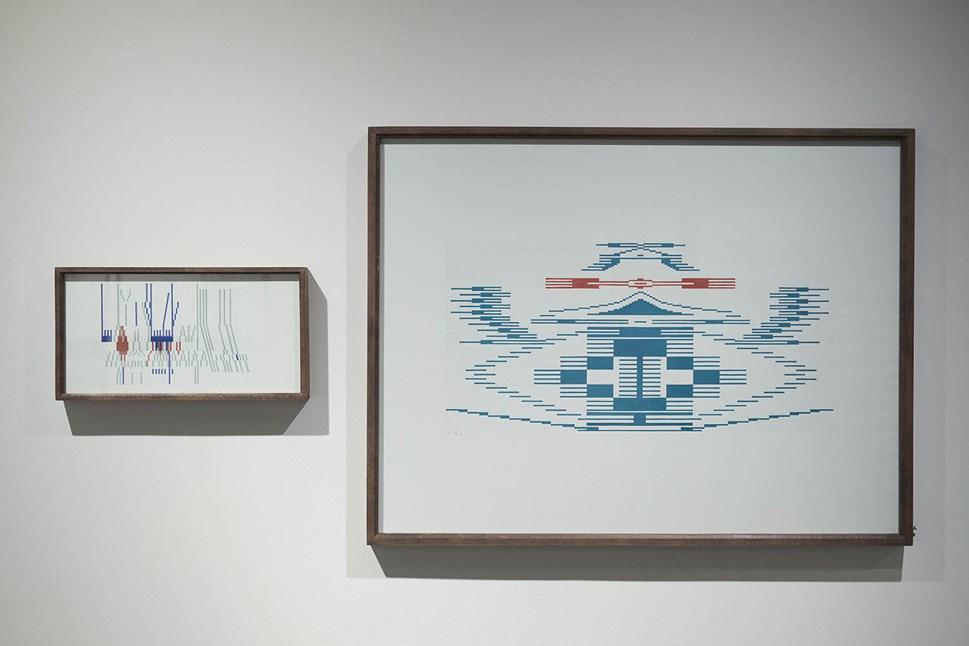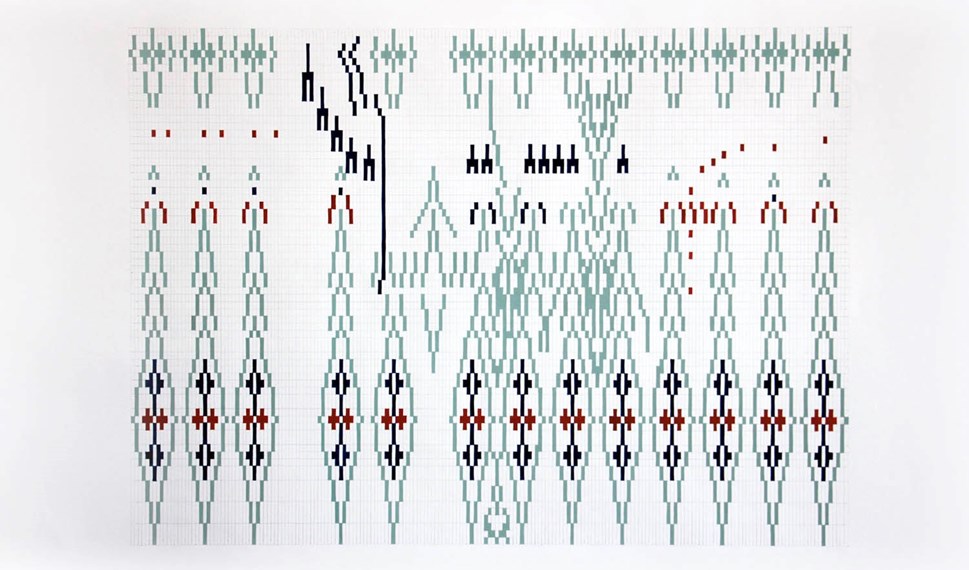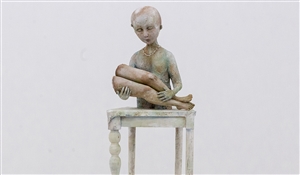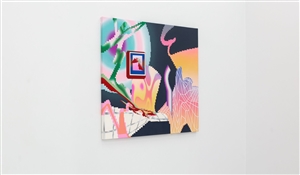On Niusha Baraei's Show
10 Aug 2022Original text in Farsi by Abel Hartouni
Translated to English by Omid Armat
Inja Gallery hosted an exhibition of artworks by young emerging artist, Niusha Baraei (b. 1998). The show was held from September 10 to 24, 2021. The series was titled "Repetition", as it is clear in the artworks' nature, and it included 24 paintings created with gouache and collage on cardboard.
According to the artist, her artworks deal with multiple issues at the same time: music, repetition, ornamental patterns of Persian art, the importance of the production process, and its health benefits for her. The grid structure which performs an essential role in Baraei's artworks has made it possible for her to explore her inner self and the painting medium in general and has also made real and abstract space easy to understand. All of her works follow almost the same logic: grid structure and extremely careful arrangement of repetitive, improvised or irregular patterns within the structure, the relation of each grid, each pattern, and eventually each artwork to the previous ones.
The ordered/disordered conditions of Baraei's artworks are formed by concentration and dispersion, the rhythmic play of repetition, various motifs which are sometimes shaped like a rhombus, and the intersection of dots and lines. The ultramarine blue plays a significant role in most of her works. Baraei believes the reason for her interest in this color is the floor tiles of Zinat-al Molk's House in Shiraz. The ultramarine blue also creates a cool/warm contrast with the saturated red, which results in a relative depth in the image. However, in general, a limited range of colors is used in her works. In one of her artworks, by collaging red, black, and drafting papers, Baraei uses a warp and weft-like structure which directly indicates the importance of carpet patterns in her work. Symmetrical structure varies among her works; in some of them it is fully implemented, but in most cases, it is replaced by some sort of lyrical improvisation and disorder. In some cases, viewers don't gain a clear understanding of the work, maybe because they cannot follow the artist's steps in the production process; that is the constant movement of eyes within the grid structure as if looking for a way out of a "labyrinth".

Installation view of "Repetition" at Inja Gallery
Although the repetitive patterns of her works remind the viewer of carpets, kilims, or even some historical buildings, the artist, according to herself, is influenced by another source of inspiration: music. Her musical experiences are mentioned in the exhibition's statement; nevertheless, the way she converts musical materials into visual materials should be investigated. The abstraction seems to be the first mutual property that she has found between them. She looks for a way to visually render the musical form. She creates a draft of what she perceives about the music, and then tries to execute the work in a grid structure; however, she welcomes any random, unexpected element that comes to her mind during the production process.
She never renders the whole structure of a kind of music but selects some elements before depicting it. For instance, in a specific part of a piece, she may find a crescendo in the volume and then decide to visualize it in the form of an ascending line, or she may want to depict a fortissimo (a loudly played musical note or phrase) with a very strong color.
Among the artworks installed in the second hall, four paintings are titled "The Series of Disorders". In these works, a line with a different color from the background enters the frame from one side, disrupts the ordered structure, and leaves the frame through the other side. This is probably the only part of this show in which the grid of planes indicates an intervention caused by something outside their independent structure. It seems that something is out of order, and not everything is purposely planned as they seem to be. In an article titled "Grids: Format and Image in 20th Century Art", Rosalind Krauss discussed the independence and anti-narrative, anti-mimetic, and anti-real properties of the grid's spatial function. For her, the grid represents art as turning its back to nature. She believes that the grid functions to declare the modernity of modern art. But in The Series of Disorders the silence and independence are somehow terminated. Here, the artist directly engages in exploring her psyche during the production process.
Eventually, when engaging with Baraei's artworks and their nested patterns, rhythms, and motifs, there seems to be one question left for the viewer and for the artist: what's next?

Niusha Baraei | Wolf’s Mouth | 2021 | Gouache on cardboard | 70×41 cm
*Installation view images courtesy: Inja Gallery's website






